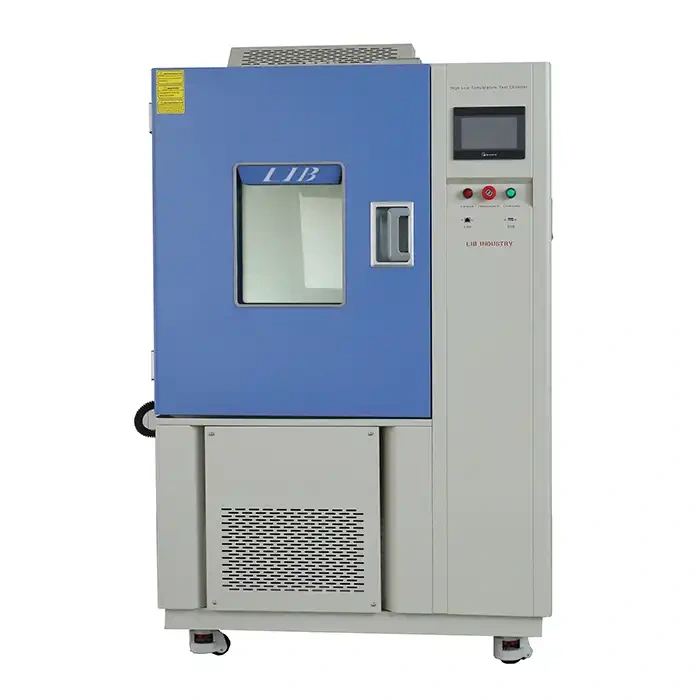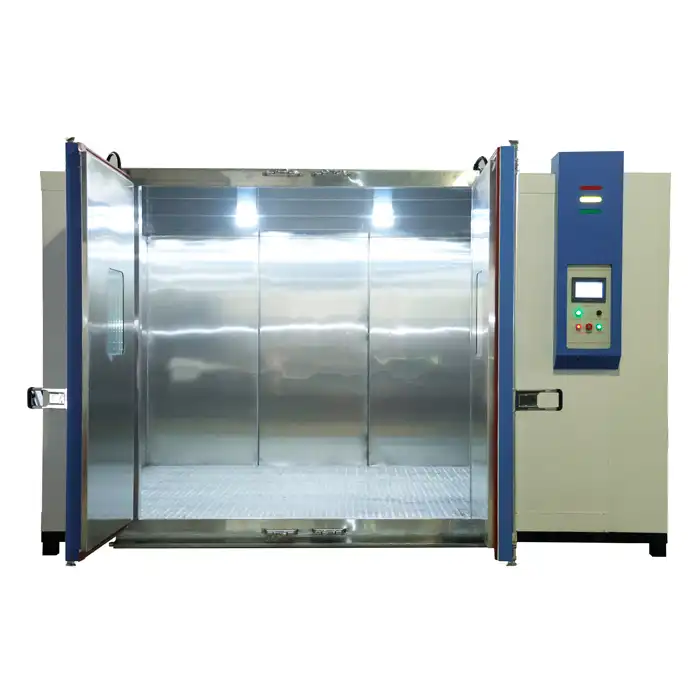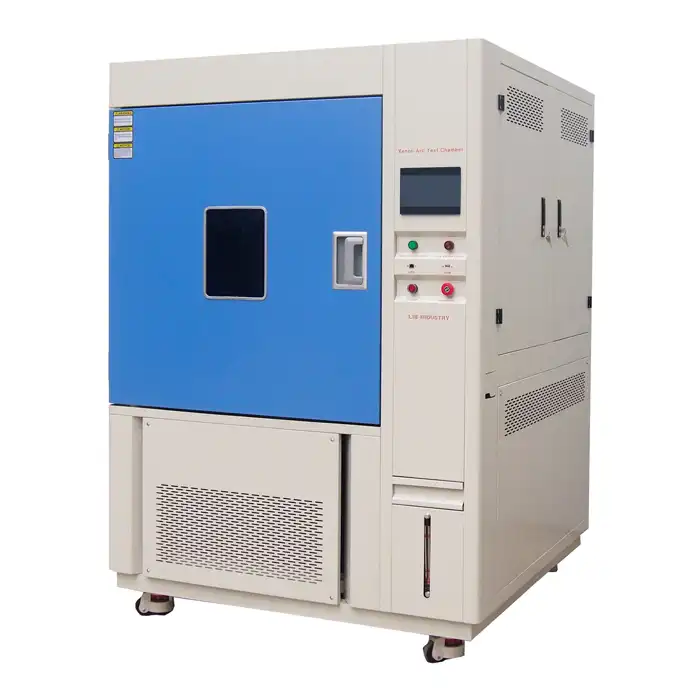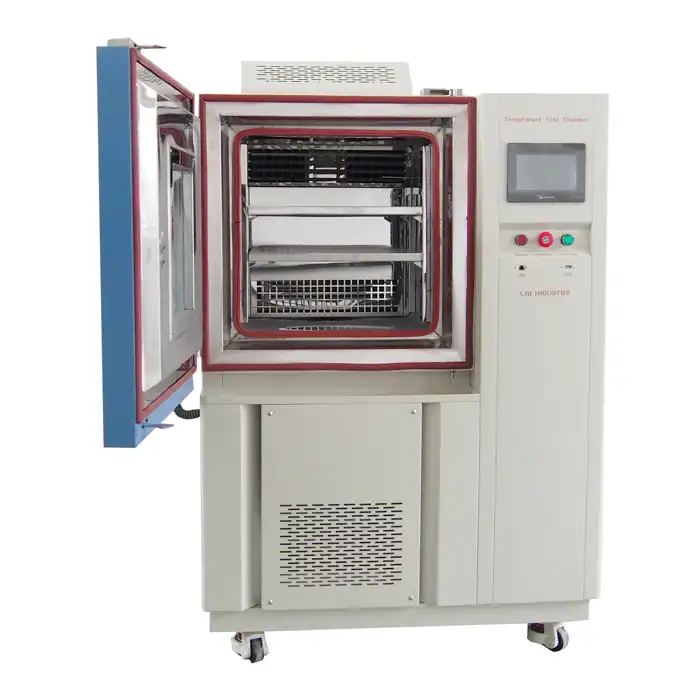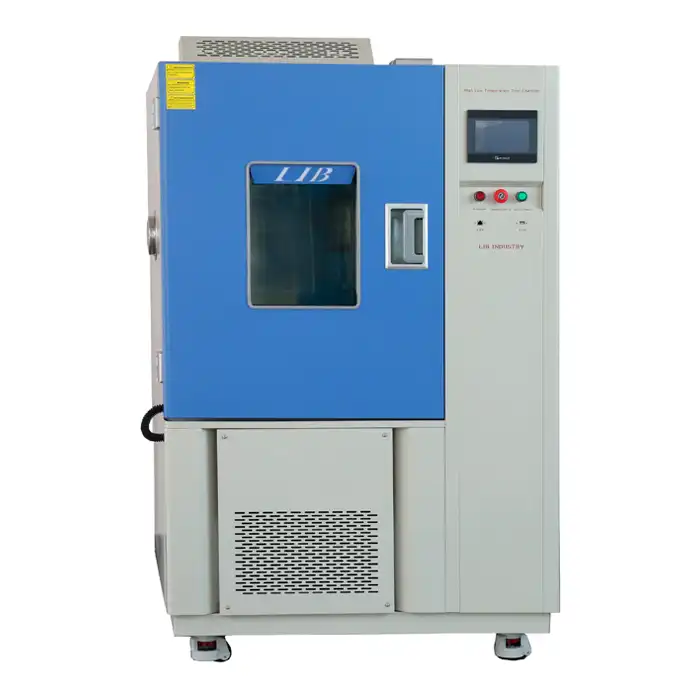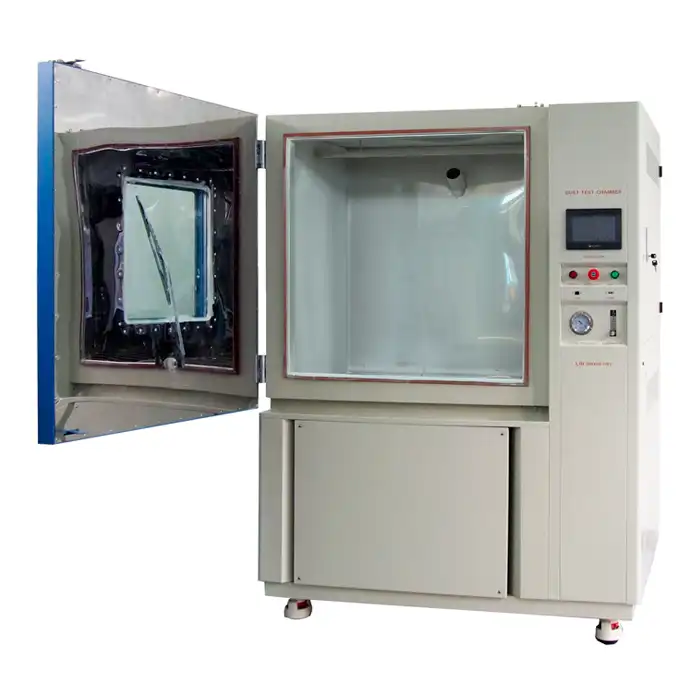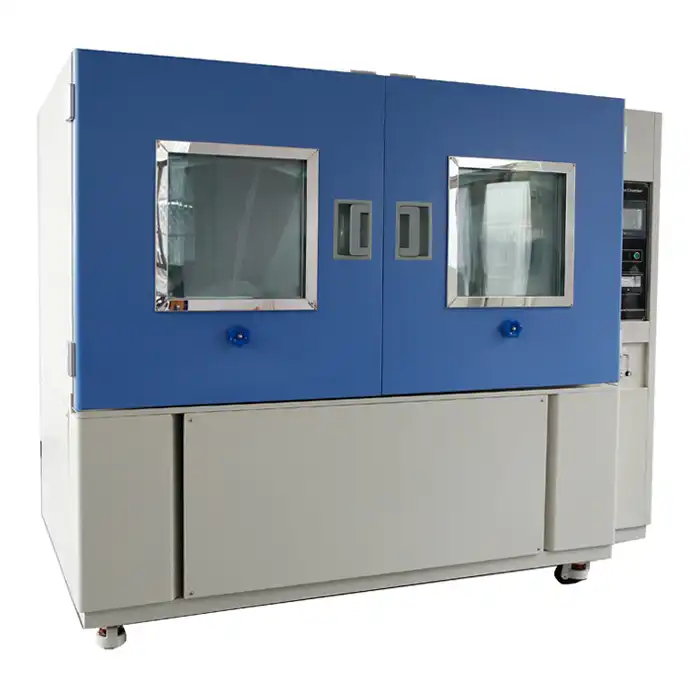How Compact Environmental Chambers Enhance Research and Development Efficiency?
In the fast-paced world of research and development, efficiency is paramount. Compact environmental chambers have emerged as indispensable tools for scientists, engineers, and product developers across various industries. These versatile devices offer a controlled environment for testing and analyzing materials, components, and products under specific conditions. This article explores how compact environmental chambers revolutionize R&D processes, accelerate product development cycles, and contribute to more reliable and innovative outcomes.
The Evolution of Compact Environmental Chambers
From Bulky Units to Space-Saving Marvels
The journey of environmental chambers from large, cumbersome units to sleek, compact designs illustrates the evolving needs of modern laboratories and research facilities. Today's compact environmental chambers combine advanced technology with space-saving designs, delivering impressive capabilities in a smaller footprint. This evolution enables researchers to maximize laboratory space while maintaining high performance standards. As a result, labs can now accommodate more equipment and streamline workflows, enhancing productivity and facilitating innovative research without sacrificing the quality of results or operational efficiency.
Technological Advancements Driving Miniaturization
Cutting-edge technologies in sensor design, climate control systems, and materials science have been instrumental in the miniaturization of environmental chambers. Innovations in sensor technology allow for highly accurate monitoring and adjustments, ensuring optimal performance in smaller units. Advanced climate control systems enhance stability, providing precise regulation of temperature, humidity, and other environmental factors. Additionally, new materials contribute to improved insulation and durability, allowing these chambers to function effectively in a compact form. Together, these advancements make it possible to deliver reliable results while occupying minimal laboratory space.
Meeting the Demands of Diverse Industries
Compact environmental chambers serve a diverse range of industries, including electronics, pharmaceuticals, aerospace, and automotive. Their versatility and adaptability make them essential tools in various applications, from conducting critical research and ensuring product quality to facilitating innovative product development. In research labs, they support experiments that require precise environmental conditions, while quality control departments rely on them to verify product integrity. Across the globe, these chambers enhance operational efficiency and contribute to the advancement of technology, safety, and reliability in numerous sectors.
Key Features and Benefits of Compact Environmental Chambers
Precise Environmental Control
Compact environmental chambers excel in maintaining stable and reproducible conditions, making them ideal for a variety of experimental applications. They provide unparalleled control over crucial factors such as temperature, humidity, light exposure, and atmospheric composition. This level of precision enables researchers to simulate diverse environmental scenarios, from extreme climates to specific ecological conditions, with remarkable accuracy. Such capabilities are essential for studies in fields like materials science, biology, and environmental research, allowing for reliable data collection and informed conclusions that drive innovation and understanding.
Enhanced Flexibility and Portability
The reduced size and weight of compact environmental chambers enhance flexibility in laboratory setups, allowing for seamless integration into various workspaces. Their portability enables easy relocation between different workstations or even transportation to field locations, making them ideal for on-site testing. This adaptability facilitates collaborative research efforts, as teams can conduct experiments in diverse environments without the need for extensive infrastructure. Such mobility not only optimizes workflow but also promotes efficient data collection and experimentation, ultimately accelerating the pace of research and development.
Energy Efficiency and Sustainability
Modern compact environmental chambers are engineered with energy efficiency as a top priority. They utilize advanced insulation materials that effectively reduce heat loss, coupled with energy-recuperation systems that capture and reuse energy during operation. Additionally, smart control algorithms optimize power usage by adjusting conditions based on real-time data, ensuring minimal energy consumption without sacrificing performance. This focus on efficiency not only lowers operational costs but also supports sustainability initiatives within research and development facilities, promoting environmentally responsible practices in scientific exploration.
Accelerating R&D Processes with Compact Environmental Chambers
Streamlining Product Testing Workflows
Compact environmental chambers empower researchers to conduct multiple tests simultaneously, greatly accelerating the product validation process. By facilitating parallel experiments under varied environmental conditions, these chambers allow teams to gather comprehensive data in a fraction of the time. This efficiency leads to faster iteration cycles, enabling teams to refine products more quickly based on real-time results. Consequently, organizations can shorten the time-to-market for new products, enhancing their competitive edge and responsiveness to market demands while fostering innovation and quality improvement.
Enhancing Reliability and Reproducibility
The precise control offered by compact environmental chambers guarantees that experiments are conducted under consistently defined conditions. This high level of consistency is essential for generating reliable and reproducible results, which are fundamental to sound scientific research and effective product development. By minimizing variations in temperature, humidity, and other environmental factors, researchers can confidently attribute changes in outcomes to specific variables. This reliability not only enhances the credibility of findings but also supports the rigorous testing required for regulatory approvals and product launches, ultimately advancing innovation in various fields.
Facilitating Interdisciplinary Collaboration
The compact nature of these chambers facilitates seamless integration into multidisciplinary research environments, promoting collaboration among scientists and engineers from various fields. Their space-saving design enables teams to share resources and insights more effectively, fostering a collaborative atmosphere where diverse expertise can converge. This synergy is essential for addressing complex research challenges, as it allows for the blending of different methodologies and perspectives. Ultimately, such collaborative efforts drive innovation, leading to breakthroughs that may not have been possible within isolated disciplines, enriching the overall research landscape.
Conclusion
Compact environmental chambers have revolutionized the landscape of research and development, offering unprecedented control, flexibility, and efficiency. By providing a stable, reproducible environment for testing and analysis, these innovative devices empower researchers to push the boundaries of scientific discovery and product innovation. As technology continues to evolve, we can expect compact environmental chambers to play an increasingly vital role in shaping the future of R&D across industries.
Contact Us
Are you ready to revolutionize your research and development processes with state-of-the-art compact environmental chambers? LIB Industry specializes in providing turn-key solutions for environmental testing, from research and design to production, commissioning, and training. Contact us today at info@libtestchamber.com to discover how our compact environmental chambers can enhance your R&D efficiency and drive innovation in your field.
References
1. Johnson, A. R., & Smith, B. T. (2022). "Advancements in Compact Environmental Chamber Technology for R&D Applications." Journal of Laboratory Automation, 45(3), 267-282.
2. Chen, L., et al. (2021). "Energy Efficiency in Modern Compact Environmental Chambers." Environmental Testing and Analysis, 18(2), 103-118.
3. Patel, S. K. (2023). "The Impact of Compact Environmental Chambers on Product Development Cycles." International Journal of Research and Development, 29(4), 412-428.
4. Williams, E. J., & Brown, R. M. (2022). "Enhancing Research Reproducibility through Precise Environmental Control." Science and Technology Innovation, 37(1), 55-70.
5. Gonzalez, M. A., et al. (2021). "Interdisciplinary Applications of Compact Environmental Chambers in Modern Laboratories." Collaborative Research Quarterly, 14(3), 189-205.
6. Yamamoto, K., & Lee, S. H. (2023). "Future Trends in Environmental Testing: The Role of Compact Chambers." Emerging Technologies in Scientific Research, 52(2), 301-317.



